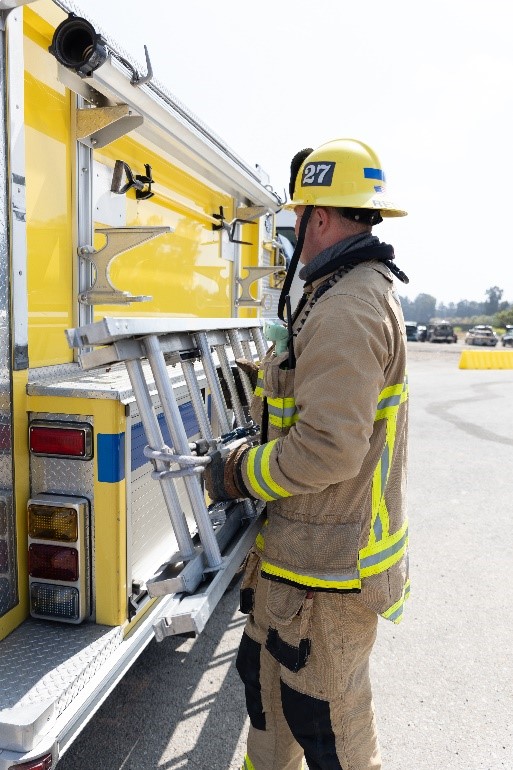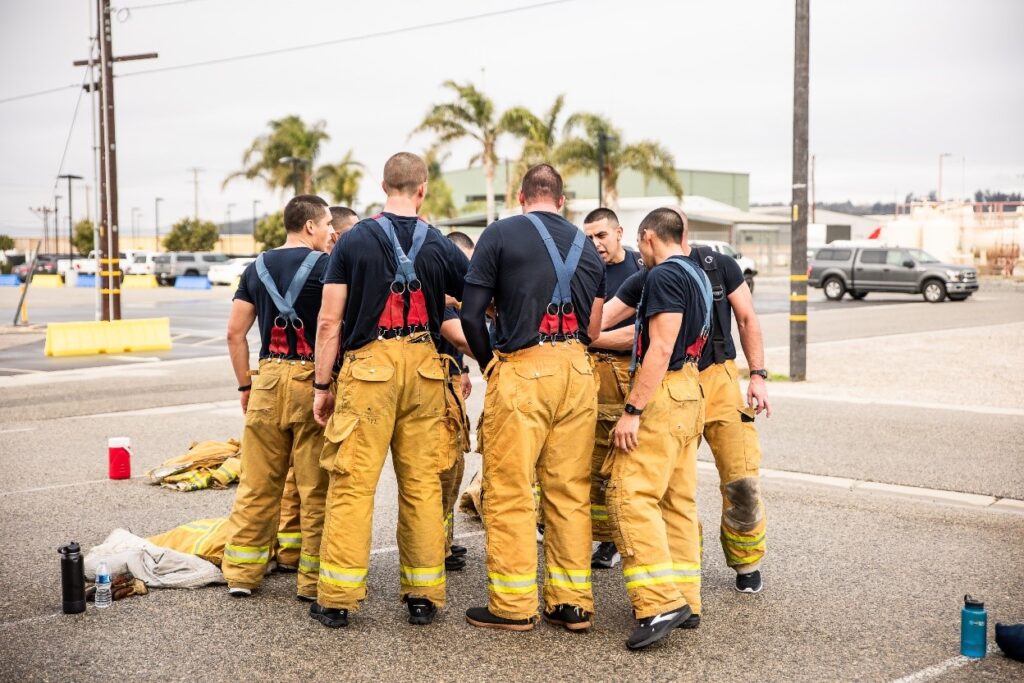
Strength training is an essential component of physical fitness for firefighters. It not only enhances overall performance but also helps prevent injuries and ensures that firefighters can carry out their demanding tasks effectively. This blog will delve into the importance of strength training, focusing on compound lifts, and explain why strength is crucial for both veteran firefighters and those aspiring to join the profession. We will also back our claims with studies and references.
The Role of Compound Lifts
Compound lifts are multi-joint movements that engage several muscle groups simultaneously. Examples include the squat, deadlift, bench press, and overhead press. These exercises are highly beneficial for firefighters due to their functional nature, closely mimicking the physical tasks performed on the job.

- Squats and Deadlifts: These exercises strengthen the lower body and core, essential for lifting and carrying heavy equipment, rescuing individuals, and maintaining stability during physically demanding tasks. A study by Williams-Bell et al. (2009) found that firefighters with greater lower body strength had improved performance in simulated firefighting tasks.

- Bench Press and Overhead Press: These lifts enhance upper body strength, crucial for tasks such as using tools, breaking through obstacles, and maneuvering heavy hoses. Upper body strength also aids in protecting oneself and others in hazardous situations.
Importance of Strength for Firefighters
Strength is fundamental to a firefighter’s ability to perform their duties efficiently and safely. Here are some key reasons why strength training is crucial:
- Improved Job Performance: Stronger firefighters can handle the physical demands of their job more effectively. Strength training enhances endurance, allowing firefighters to perform tasks with less fatigue. A study by Davis et al. (2002) showed that strength training significantly improved the performance of firefighting tasks such as climbing stairs, carrying loads, and dragging hoses.
- Injury Prevention: Firefighting is a physically demanding job that often leads to musculoskeletal injuries. Strength training strengthens muscles, tendons, and ligaments, reducing the risk of injuries. A study by Poplin et al. (2012) found that firefighters who engaged in regular strength training had a lower incidence of work-related injuries.
- Enhanced Recovery and Longevity: For veteran firefighters, maintaining strength is vital for longevity in the profession. Strength training aids in faster recovery from the physical stresses of the job and helps prevent the decline in physical capabilities that comes with age.
Benefits for Pre-Academy Candidates

For those aspiring to become firefighters, strength training is a crucial part of preparation. It not only improves physical fitness but also enhances the chances of passing rigorous physical assessments required for entry into fire academies.
- Physical Preparedness: Aspiring firefighters need to demonstrate a high level of physical fitness. Strength training prepares them for the physical tests they will encounter, such as carrying heavy loads, climbing stairs, and performing rescue simulations.
- Building a Strong Foundation: Starting strength training early helps build a solid foundation, ensuring that future firefighters can meet the demands of the profession from day one. A study by Rhea et al. (2003) highlighted the importance of strength training in improving the physical performance of recruits.
Conclusion
Strength training, with a focus on compound lifts, is indispensable for firefighters. It enhances job performance, prevents injuries, and ensures that both veteran and aspiring firefighters can meet the physical demands of their profession. Fire departments should incorporate strength training into their fitness programs to promote the health, safety, and effectiveness of their personnel.
About the Author

Justin Reading brings over 15 years of expertise to the fitness industry, specializing in working with first responders. He is dedicated to reducing pain and improving quality of life for his clients, working with local fire departments to optimize human performance and identify solutions to exceed the demands of the job. Over the past six years, Justin has focused on research and developing specialized programs to enhance first responder’s capabilities. Previously, as Lead Trainer and Manager at Sports Academy Thousand Oaks, he worked with professional athletes from the NFL, NCAA, NBA, and MLB, helping them achieve peak performance levels.
References
- Williams-Bell, F. M., Villar, R., Sharratt, M. T., & Hughson, R. L. (2009). Physiological demands of the firefighter candidate physical ability test. Medicine and Science in Sports and Exercise, 41(3), 653-662.
- Davis, P. O., Dotson, C. O., & Santa Maria, D. L. (2002). Relationship between simulated firefighting tasks and physical performance measures. Journal of Occupational Medicine, 24(6), 533-538.
- Poplin, G. S., Harris, R. B., Pollack, K. M., Peate, W. F., & Burgess, J. L. (2012). Beyond the fireground: Injuries in the fire service. Injury Prevention, 18(4), 228-233.
- Rhea, M. R., Alvar, B. A., & Gray, R. (2003). Physical fitness and job performance of firefighters. *The Journal of Strength and C